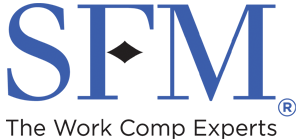For health care workers, sometimes employee safety and patient safety seem to compete. But leaders at St. Luke’s Hospital in Duluth believe the two go hand-in-hand.
“Our organization here is really mission-driven and patient-focused,” said Director of Rehab Brett Osborne. “If our nurses are injured and can’t serve the patients, then we’ve got a problem.”
As a side benefit of this patient-first mentality and focus on employee safety, St. Luke’s has been able to keep workers’ compensation costs in check.
Their experience modification factor reached a peak in 2007 of 1.36, but has been steadily dropping since then and is now just 0.63. And though their payroll has increased nearly 180 percent since 2006, claim frequency has consistently decreased from 3.35 claims per million dollars of payroll in 2006 to 1.62 claims per million dollars of payroll in 2016.
Focusing on lifting injuries
One key contributor to this decrease has been improvements in safe patient handling.
In 2007, St. Luke’s began working with Barrier Free Access , a provider of safe patient handling products and design consultation, to bring in new lifting equipment and staff training in an effort to cut down on staff injuries.
The lifts they were previously using were getting old and in need of replacement. St. Luke’s was also seeing more employee injuries from manual patient movement, driving up workers’ compensation costs.
Battling tradition
Getting new equipment was only part of the solution; St. Luke’s also had to change its lifting culture.
Nurses typically were not trained in school to use lifts and were instead in the habit of lifting and moving patients manually, increasing their chances of injury. To combat this, St. Luke’s made sure that each unit had nurses with extra training on the lifts called “super users” to act as advocates for their use and to help other staff become comfortable using the equipment.
“It’s one thing for the safety officer or the rehab director to talk to them, but when you’ve got a leader on your floor, somebody that’s really advocating for the lifts – that’s a key piece,” Osborne said.
All of the nursing staff is trained when new lifting equipment is brought in, but the super users from each unit receive longer training sessions and help to train the staff on their unit and to continue to advocate for the proper utilization of this equipment for safe patient handling. Super users receive an additional four hours of training on the equipment, situational uses, a few more “tips and tricks” and some troubleshooting of various situations that might occur and how to teach the staff.
To check that the training sessions were successful, they began holding Super Users Lunches. Each time equipment was installed in a new unit, all the super users would get together for lunch to provide feedback.
Training gurus and super users
As an additional measure to transition the staff into using lifts and other safe patient handling techniques, St. Luke’s began an annual Safe Patient Handling Week. Several staff members have been sent to Barrier Free Access, now an SFM subsidiary, to receive an additional one and a half days of high level lift training called Guru Training.
Getting the employees fully involved in the transition, allowing them to provide input and then incorporating feedback they provided proved to be essential to building a successful safe patient handling program.
These gurus share their expertise in using the lifts and assist the rest of the staff during every shift on every unit. The gurus also encourage use of the lifts and show the staff ways to make moving patients easier.
Whenever more safe patient handling equipment is purchased and put out on the units, a safe patient handling week is held with the gurus used for additional targeted training on all units during every shift.
In addition, rehab staff in the past have been hesitant to incorporate the use of lifts, as it appears to be at odds with the goals of having the patients move themselves and eventually progress to independence. Involving key rehab staff from the beginning to devise a system for assessment and implementation combining the goals of safe movement using devices with eventual progression (as able) to have the patient safely move themselves also contributed to the success.
As a side benefit of this patient-first mentality and focus on employee safety, St. Luke’s has been able to keep workers’ compensation costs in check.
Getting the employees fully involved in the transition, allowing them to provide input and then incorporating feedback they provided proved to be essential to building a successful safe patient handling program.
“It’s a team effort,” said Safety Officer Mike Marturano. “Get a team together and identify where your issues are and move forward through that.”
Photo courtesy of St. Luke’s Hospital
